[Post originally published on substack on December 30, 2022.]
Calm, rhythmic breathing accompanies the steady sound of footsteps tapping the pavement in fast succession. Night covers the empty street, and the scant light of the streetlamps barely illuminates the speedily running figure of Kurahara Kakeru, who is tightly gripping the sandwich he just stole. With his inhuman speed, he doesn’t worry about the shopkeeper catching up with him. But then a light appears in the dark behind him, bouncing hurriedly left and right and closing in fast—a young man on a bike is racing after Kakeru. Once level with him, a friendly face with a big smile and bright eyes calls out to him: “Hey, do you like running?”
And so begins the charming tale about a group of ten university students running their way to one of the most-watched sports events in Japan.

More Than Just Running
As is clear from the English title, Run with the wind, the anime is about running, but it’s not just about running, and particularly not about just any running. It’s about taking part in the prestigious and nationwide televised elite long-distance relay race, the Hakone Ekiden, or in its full version, the Tokyo-Hakone Round-Trip College Ekiden Race.
The university student, Kyose Haiji, creates the ‘ultimate team’, and together they evolve from a no-name team into elite-like athletes. They suffer physical and emotional hardships to achieve their goal and experience both the power of mutual support and the pressure of being part of a team. To them, there is more to the race than having their images flicker across the screens in thousands of homes just after New Year’s Day. In addition to training schedules and personal dramas, the two main characters, Kurahara Kakeru and Kyose Haiji, also tackle practical and philosophical questions concerning this specific sport.
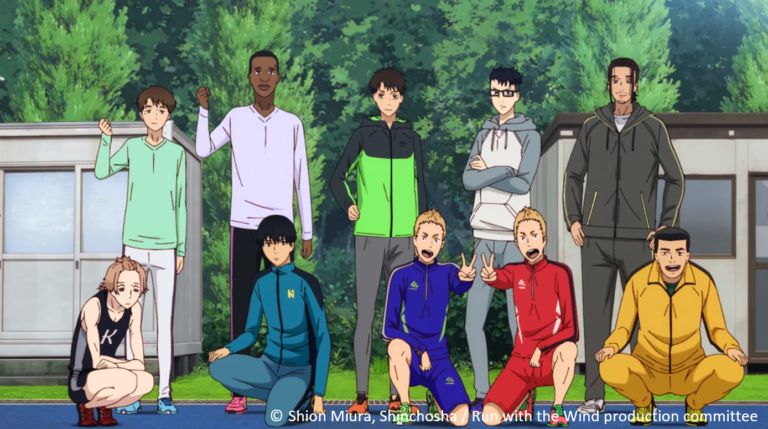
The Arrival Of The Fated Tenth Man
The young man that raced after Kakeru in the opening scene is Kyose Haiji. Just like Kakeru, he is a student at Kansei University in Tōkyō, though he is already in his fourth and therefore last year, while Kakeru just started. The first-year student was camping on school grounds because he lost his money betting and therefore couldn’t afford an accommodation. He was in luck, though, because Haiji was very willing to take in the one-time shoplifter. One room was still available in the ten-room mansion, lovingly called Aotake, and Kakeru was the perfect fit. Why, you might ask? Well, not just anybody could help fulfill Haiji’s long-awaited dream. And enthralled by Kakeru’s flawless running form, Haiji was certain: “That’s my dream, right there. It has taken shape and is running. Like a shooting star.” With the arrival of the fated tenth man, Haiji could finally proceed with realizing his vision: participation in the Hakone Ekiden.

None of the nine inhabitants knew that the Aotake wasn’t just home to a group of random university students. During a happy get-together, Haiji revealed to his fellow lodgers that the Aotake is the dorm of the Kansei University Track and Field Club, making them official members. And, he went on excitedly, with all the rooms filled, they would now train for and participate in the well-known long-distance relay race in about ten months. Haiji’s encouraging exclamation, “Let’s run it together! The Hakone Ekiden” fell on shocked ears and failed to elicit the desired positive responses. Instead, the young men stared speechlessly at Haiji, and in the frozen silence, you could hear an icy wind of premonition blowing sharply through the room.

No Walk In The Park
The reactions of the team members to Haiji’s revelation varied, from disbelief to shock to wondering what the Ekiden is. Only Kakeru, who was a competitive track and field runner in high school, knew about the relay race and was very displeased with this new development. Trying for Hakone with a bunch of guys that have no experience whatsoever in long-distance running is doomed to fail. As outspoken as he was, Kakeru didn’t hesitate to share his thoughts with the others: “Absolutely impossible! The top track and field teams train hard every day for years, but only a handful of them can even qualify.”

Taking a closer look at the race, Kakeru’s opposition is understandable. Ten runners must overcome a succession of half marathon-like distances ranging from 20.8–23.1 km (in total, 217.1 km or 134.9 miles). But if you think you can leisurely trot along the traffic-free streets of Yokohama or enjoy the scenic view of Sagami Bay, you couldn’t be more wrong. This race is not for amateurs. Why so? Let’s take a brief look at half-marathon times. (Please note that I’m only talking about the times of men because women aren’t allowed to run at the Hakone Ekiden). The average time for a half marathon novice of university age is somewhere between 2:05 and 2:24 for the roughly 21.1 km (13.1 miles). At the 2022 Hakone Ekiden, the runners finished the ten different sections at elite-level times between 0:58 and 1:16 hours, which gives us about a one-hour difference between beginners and Ekiden participants.

In addition, not everyone can run in the Hakone Ekiden. Only twenty university teams from the Kantō region can participate. Half of the spots are already filled with the top teams from the previous year’s race. The remaining spots are given to the top ten finishers at the qualifier in October. Thus, Haiji’s team has to compete with elite runners from 48 other universities for a starting spot. 43 teams took part in the real 2022 qualifying race, with the individual runners taking between 1:00 and 1:23 hours to finish the 20-km course, making it, similar to the Ekiden itself, a high-paced, elite race. As you can imagine, this is not a walk in the park, and someone who has done no sports at all will have some difficulty reaching this level within ten months. What’s more, the race takes place on the 2nd and 3rd of January, at numbing temperatures close to or even below 0°C.
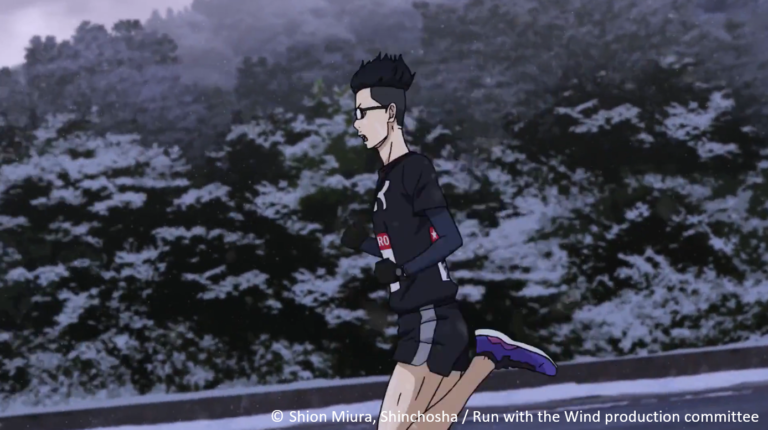
Kakeru was not the only one who didn’t share this ambitious dream. But for Haiji’s vision to come true, all of them had to participate, as a team of ten men is a basic requirement. Consequently, he used all means available to him to force his prospective teammates into submission.
The Cunning Art Of Persuasion
Before training could begin in earnest, the ‘new’ members had to be persuaded to devote their bodies to Haiji’s cause and put their free time and other desires on hold. Thanks to his observant power and spy-like intelligence, Haiji knew the guys’ habits, likes and dislikes, sporting history, body structure, and daily whereabouts. He could therefore expertly target his teammates’ most vulnerable points.
The manga aficionado, Prince, was warned that he would have to find a new home for himself and his meticulously piled stacks of manga, which filled his room from floor to ceiling, should he choose not to participate. The good-natured Musa was reminded of the favor he owed Haiji. And the twins, Jōji and Jōta, were on board as soon as Haiji promised them that Ekiden runners are lady killers. Additionally, Haiji cunningly used the charming Hanako, a high school girl, as ‘treat’ to keep everyone motivated.
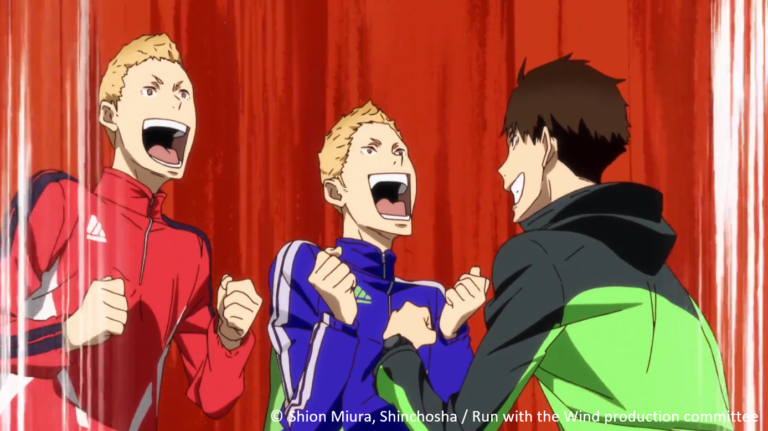
The Conversion Of The Lone Wolf
However, Haiji not only had to lure the reluctant beginners to participate in the strenuous training. He also had to convince the prodigy Kakeru of the shared joy of running together. Kakeru was still grappling with dramatizing events during his high school days and since then avoided any team competition and was determined not to budge. “If I want to run, I’ll run alone.”
Despite his aversion to teamwork, for some inexplicable reason, he still took part in the joint training runs from day one. However, the elite runner was not blessed with self-restraint and thus communicated his discontent about the other members’ lack of commitment and slow progress frequently and quite bluntly. It’s a mystery to me why he participated in the first place. I assume that the call of the prestigious Ekiden rang too temptingly in his ears.
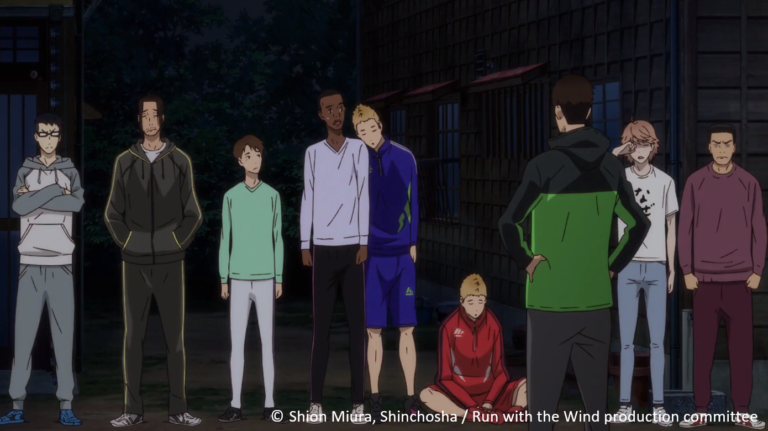
Anyway, Haiji wanted to convince Kakeru of the opposite and told him that he can’t escape the haunting voices in his head: “Even though you run by yourself, you’re not actually alone. You are always running with someone else.” Constant dripping wears the stone, and after a sequence of enlightening events, Kakeru realized the truth of Haiji’s words and finally found joy in group activities. Like Kakeru, the fledgling athletes, one by one, gave in to Haiji’s persistent pressure and started to take the training more and more seriously. And so their race against time began.
The Clock Is Ticking
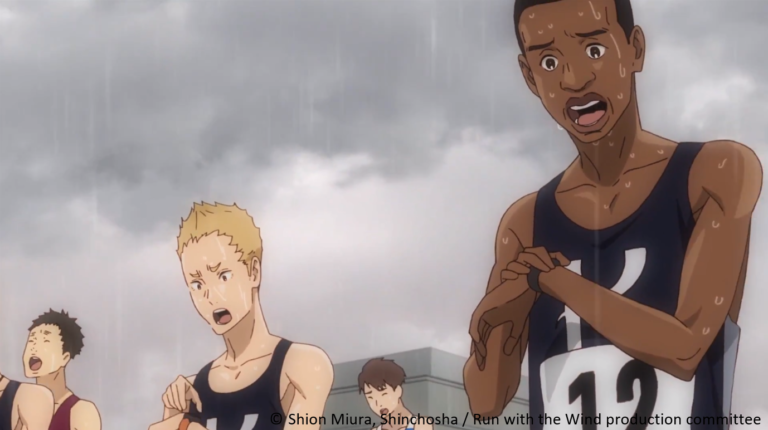
Fierce competition accompanied their endeavor, not only at the Ekiden itself but already at the qualifier. However, before the team could even think of partaking in the qualifying race, each member had to attain an official record under a certain time limit. Apart from Haiji and Kakeru, none of them could run “one kilometer in the time it takes to prepare cup noodles”—as King phrased it—or more precisely, 5 km (3.1 miles) in 16:30 minutes or 10 km (6.2 miles) in 30:00 minutes. While Haiji sustained the firm belief that they would succeed, Kakeru was all about the numbers. But these looked disheartening and certainly did not reflect Haiji’s optimism.

Consequently, Kakeru repeatedly clashed with Haiji about this issue. While Haiji held everyone’s effort in high regard, Kakeru noticed that their times were not improving, or improving too slowly. “Are records everything?” Haiji asked him, sitting at the kitchen table. “Is running for you all about speed and abandoning those who fall behind?” His sharp criticism is puzzling since it’s a time-based race, after all. Prince’s sudden appearance interrupted their heated discussion about the different values of time and effort. Haiji failed to convince Kakeru, who, before leaving the kitchen, approached Prince, the slowest member, with an incomprehensible suggestion. He ought to retire from the team should his time not improve at the next meet. “For the team,” he added, looking gravely into Prince’s eyes. Having watched the anime so far, it’s clear that every single Aotake lodger is essential. And since Prince didn’t move out when he had the chance, he was now an indispensable member of the team, which makes Kakeru’s suggestion somewhat bewildering.

Team Spirit
I assumed that such an exclamation would cause friction among the young men and that the next episode would have me on pins and needles about the survival of Haiji’s painstakingly assembled team. But, with a few words at the beginning of the following episode, Haiji put an abrupt end to the suspense, emphasizing that Kakeru only said that because he’s taking running at the Hakone seriously—and apparently, this is all that counts.

Direly needing every man, especially the super-fast Kakeru, one could say the others had no choice but to accept his irritable character. It still surprised me, though, that nobody scolded him for his behavior, not even a little. But all this makes one thing explicitly clear: the team as such will never be jeopardized or put at genuine risk, not even to create tension for the sake of the viewers. All the runners give their best for the team and thereby represent—ideologically speaking—the very spirit of the Hakone Ekiden: individual effort for the common goal.
Of course, Kakeru is not a bad guy. This incident just serves to demonstrate that he, too, cared about the team (or the competition) in his own way. Additionally, it shows how being with his teammates enabled him to grow into a likable, cooperative character that enjoyed group competitions. After this cold-hearted display, Kakeru made up for it by spending some quality time with Prince. They trained and read manga together until their rhythms matched, and Prince, with the expert help of Kakeru, was able to improve his time.

A Most Important Piece Of Cloth
The Hakone Ekiden is stylized as the epitome of teamwork, and the concerted effort of the individual runners. This is also symbolized by the sash (tasuki) that is handed from one runner to the next at the relay station. Yet, passing on the sash is not just the physical act of placing it into the next man’s palm. With it, the runner carries—or so it is said—the effort of every man that went before him. Haiji rejoiced at this thought: “My heart naturally begins to leap. Each of us will stand on his starting line, waiting for the sash. We will receive it and pass it on to the next runner. Passing it on and on until we finally reunite at Ōtemachi.”
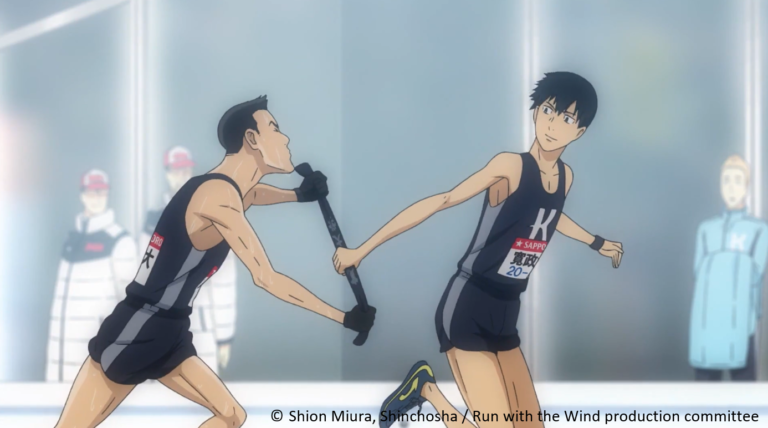
Worry not! You won’t miss out on witnessing this significant deed when you watch the anime. The producers made sure that every single transfer of the Kansei University team is depicted in its entirety. It starts with the anxiously waiting man waving encouragingly as soon as he sees his teammate. Making a final effort, the approaching runner removes the sash and extends his hands to the outstretched palm of his counterpart. Slow motion and freeze frames allow us to experience (and understand) the full emotional extent of this exchange. Maybe your vision will blur too when you hear the encouraging words of the arriving runner and see the proud and grateful smile of the receiver before, sash in hand, he dashes away.

Each sash bears the university’s name and is dyed in its colors. Strictly speaking, though, passing on this original sash to the next man isn’t required to continue or finish the race. If a runner lags behind by a certain amount of time, the person waiting at the relay station has to leave without performing this symbolic act. Instead, he is given a white-and-yellow striped sash to shoulder for the rest of his run.
Knowing this, it really amazed me when I saw Prince, who ran the first section, make it in time to place the black sash in Musa’s hand. The manga enthusiast must have really upped his game to keep up the ‘cup noodles pace’ for the 21.3 km and make it in time. Especially considering that Prince really hates running. And yet, approaching the finish line and the end of his torture, he lets us know that he would have hated himself had he not participated. In the end, he found some value in being forced to run and was even given the chance to put the ‘life lessons’ he learned from all the sports manga he read into practice.
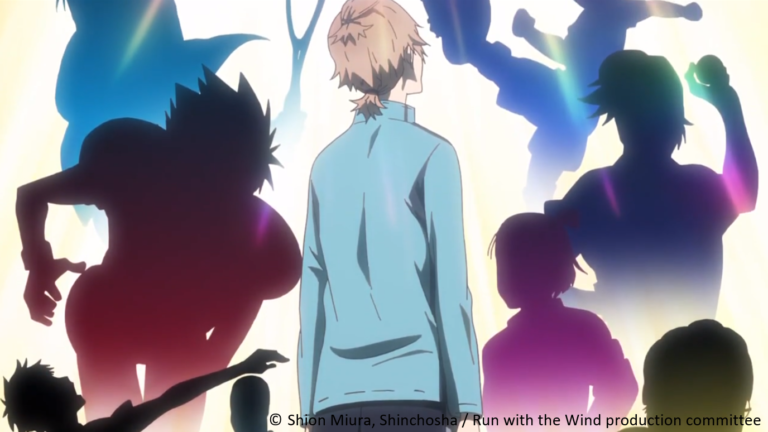
Sacrifice
Despite reflecting idealized values, the Hakone Ekiden is quite the cruel race, causing physical injuries, emotional drama, tears, and heartbreak. Should a runner drop out due to fatigue, pain, or some other reason, the race is over—for him and his entire team. Understandably, none of the athletes wants to carry the weight of such a loss.

And so, we watch the diligent and mild-mannered Shindō, burning with fever, his breathing labored, dragging his feet up the seemingly endless slope of the physically demanding 5th section. Mesmerized, the spectators stare in silence at the screens of their various devices, unable to avert their eyes from the heart-wrenching drama that unfolds before them. But Shindō is determined to go on. Even when the team’s coach (the landowner of the Aotake) hops out of the car and implores the young man to stop, he refuses to give up. Coughing and wheezing and holding on tightly to the cloth draped across his chest, Shindō continues the race because “They… are all… waiting… so…”
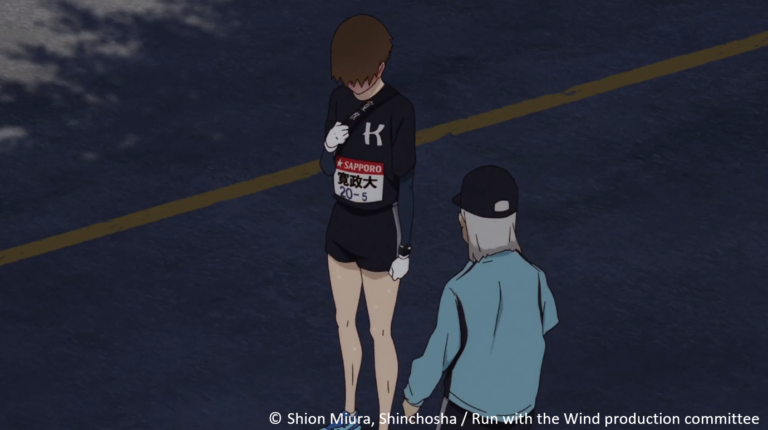
As Shindō collapses into the arms of Haiji and Kakeru after crossing the finish line, the first race day comes to an end, and we can take some time to recover from this impressive demonstration of willpower. To put your minds at ease, a good night’s sleep was enough for Shindō to recover from his illness.
The same is not true for Haiji. When he crossed the final finish line back in Ōtemachi at the end of the race, his knee, already suffering from a previous injury, demanded payment for the reckless treatment. But just as Shindō, who ran despite being seriously ill, Haiji too decided to put his future on the line for this single race. “I have teammates who brought me this far,” he explained to the sports physician, who was trying to warn him against overstraining his knee, “I’m prepared.” Consequently, Haiji made the ultimate sacrifice, never to run competitively again for the sake of his team and for finishing the Hakone Ekiden.
The (Media) Spectacle
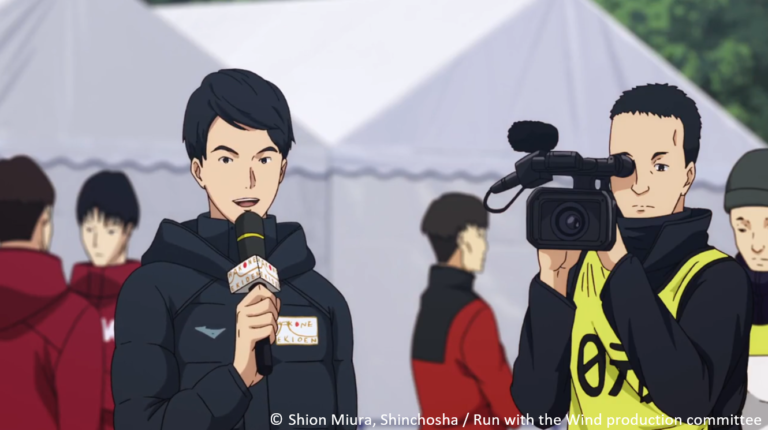
“Which university will write a new page in history?” the announcer asks and thus kicks off the broadcast of the historic long-distance relay race. In the course of two days and about 17 hours of broadcasting time, media correspondents inform viewers about the runners’ past achievements and current times, their backstories, ambitions, and the difficulties they face while taking on their section. Back in the 1950s, those interested in the race would have had to tune in to NHK Radio, which had broadcast the event on radio since 1953. TV Tokyo aired the event for the first time on television in 1979, though only parts of the race were shown live. NTV overcame the radio interference caused by Mount Hakone and has broadcast the entire race live since 1987.

To make sure no detail whatsoever is missed, a legion of reporters, photographers, and cameramen accompany the runners. Broadcasting cars and bikes follow the athletes’ every step, and helicopters provide aerial views of the route and its surroundings. Newscasters comment on the proceedings of the race in real time during a special New Year’s program. It’s impossible to escape the sharp eye of the media. The physical condition and pace of the athletes, every dash and every stumble, are captured on camera and conveyed to the spectators. With a TV audience rating of around 20–30% (depending on the source), it is deemed one of the most-watched sports events in Japan, making this relay race an attractive event for sponsors and advertisers and also a very lucrative one for the broadcaster. Naturally, the TV station wants to draw as much drama out of the spectacle as possible to keep the audience and advertisers interested.
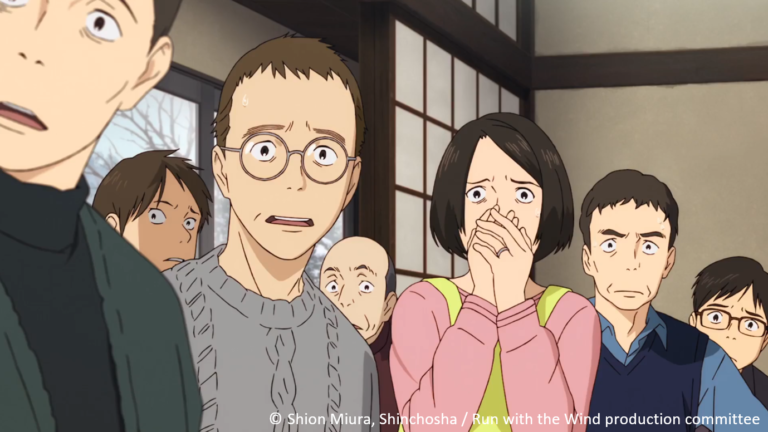
Despite being broadcast nationally, it is a regional race because only universities from Kantō region can participate. So, I was wondering why it is so popular. Is it the display of idealized values, spurred on by the media, that led to its popularity? Maybe people are just starving for the emotional drama depicted during the race. Or perhaps the quiet days after New Year’s Day are just ideal for glancing occasionally at the wiry figures on the TV screen while chatting away with family and friends.
Itching To Run
In case you fear that watching the monotonous movements of a bunch of guys running along paved streets is dull, rest assured! Following the characters through tough training sessions in blazing heat and pouring rain and seeing them brave the bitter cold at the end of their journey is not boring at all. Very much in the spirit of the actual competition, the anime is filled with drama—and budding love of various kinds. Listening to the characters’ breathing and inner monologues never gets tiring.
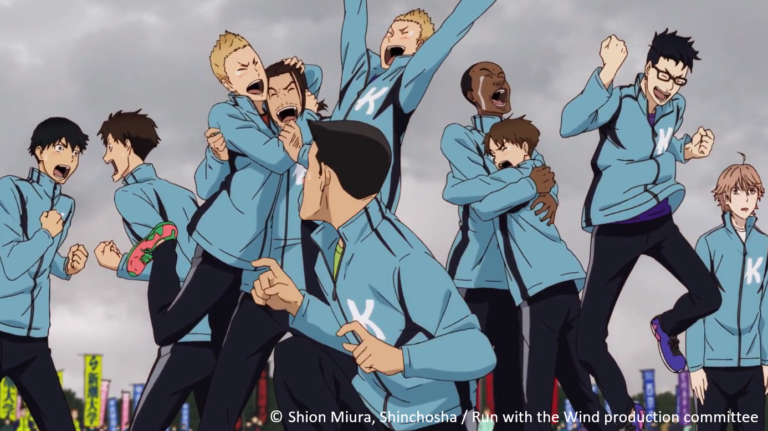
The diverse cast reflects equally diverse experiences and attitudes toward running. There are those who discovered the joy in it, and those whose love for this sport was rekindled. Others found that participating in this endeavor challenged their interpersonal relationships and enabled them to grow. I guess it’s easy to find at least one relatable character among them, making the experience of watching the anime all the more close to heart. It makes you feel like taking on the streets yourself and experiencing the invigorating feeling of running. After all, exercise is healthy, even if you cannot match the ‘cup noodles pace’.

Links:
- Original post published on sportsbaka.substack.com
- Anime website: Kaze ga tsuyoku fuiteiru
- The anime is based on the book by Shion Miura.
- The KGRR – The Inter-University Athletic Union of Kanto
- The Hakone Ekiden Museum
Subscribe to never miss a deep dive into the exciting world of sports anime, manga, and manhwa!

